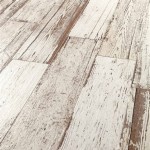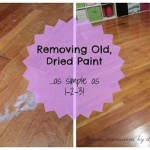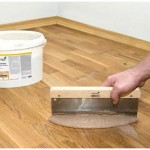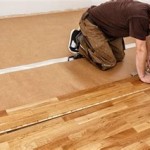Removing Dog Urine Stains and Odors from Wood Floors
Dog urine presents a significant challenge for homeowners with wood flooring. The porous nature of wood allows urine to penetrate deeply, causing unsightly stains and persistent odors. Addressing the problem promptly and effectively is crucial to preventing permanent damage and maintaining a sanitary living environment. This article outlines the steps involved in removing dog urine from wood floors, focusing on both fresh and set-in stains, and provides insights into preventing future occurrences.
Understanding the Problem: Why Dog Urine Damages Wood Floors
Wood, while aesthetically pleasing and durable under normal conditions, is susceptible to damage from liquids, particularly acidic substances like dog urine. The organic compounds in urine, coupled with its acidity, contribute to both staining and odor issues. The following explains the process:
Firstly, the urine's liquid component seeps into the wood's grain. Unsealed wood is especially vulnerable, but even floors with a protective finish can allow urine to penetrate through cracks, gaps, or worn areas. As the urine dries, the water evaporates, leaving behind concentrated waste products, including urea, uric acid, creatinine, and electrolytes.
Secondly, uric acid crystals are particularly problematic. These crystals bind tightly to the wood fibers, making them difficult to remove with conventional cleaning methods. They are also a significant source of lingering odor, as they can reactivate and release odor molecules when exposed to humidity or moisture.
Thirdly, the acidity of urine can etch or discolor the finish of the wood floor. Over time, repeated exposure can lead to the breakdown of the finish, making the wood even more susceptible to staining and damage. In severe cases, the urine can penetrate so deeply that it alters the color of the wood itself, requiring professional refinishing to restore the floor's original appearance.
Finally, neglect exacerbates the problem. The longer urine remains on the floor, the deeper it penetrates and the more difficult it becomes to remove. Prompt action is, therefore, critical to minimizing damage and preventing persistent odors.
Addressing Fresh Dog Urine Stains
Immediate action is paramount when dealing with fresh dog urine. The goal is to absorb as much of the liquid as possible before it penetrates deeper into the wood. The following steps outline the recommended procedure:
1.
Immediate Blotting:
Upon discovering fresh urine, promptly blot the area with absorbent materials such as paper towels or clean cloths. Apply firm pressure to soak up as much liquid as possible. Replace the absorbent materials frequently until no more urine is being absorbed.2.
Neutralizing the Area:
After blotting, neutralize the affected area with a mild cleaning solution. A mixture of equal parts white vinegar and water can effectively neutralize the urine's acidity. Alternatively, a commercial enzymatic cleaner specifically designed for pet odors can be used. Follow the manufacturer's instructions carefully.3.
Applying the Cleaning Solution:
Lightly dampen a clean cloth with the chosen cleaning solution and gently wipe the affected area. Avoid saturating the wood, as excessive moisture can cause further damage. Ensure the solution covers the entire area affected by the urine.4.
Drying the Area Thoroughly:
After cleaning, thoroughly dry the area with a clean, dry cloth. Ensure no moisture remains on the surface. Consider using a fan to promote faster drying, especially in humid environments. Proper drying is crucial to prevent the development of mold or mildew.5.
Monitoring for Odor:
After the area is completely dry, monitor for any lingering odor. If an odor persists, repeat the cleaning process or consider using a more specialized cleaning product designed to eliminate pet odors. Continued odor indicates deeper penetration that needs further treatment.Removing Set-In Dog Urine Stains and Odors
Set-in dog urine stains and odors require more aggressive treatment due to the urine's deeper penetration into the wood fibers. The following methods are commonly used to address these challenges:
1.
Enzymatic Cleaners:
Enzymatic cleaners contain enzymes that break down the organic compounds in urine, effectively eliminating both stains and odors. Choose a high-quality enzymatic cleaner specifically formulated for pet urine on wood floors. Follow the manufacturer's instructions carefully, as application methods and dwell times may vary.2.
Baking Soda Paste:
Baking soda is a natural deodorizer and can help absorb odors from wood floors. Create a paste by mixing baking soda with a small amount of water. Apply the paste to the stained area and allow it to dry completely. Once dry, vacuum or sweep up the baking soda residue. Repeat the process as needed.3.
Hydrogen Peroxide Solution:
Hydrogen peroxide is a mild bleaching agent that can help lighten stains and disinfect the affected area. Use a 3% hydrogen peroxide solution and test it on an inconspicuous area of the floor first to ensure it does not damage the finish. If the test is successful, apply the hydrogen peroxide to the stained area and allow it to sit for a few hours. Blot up the excess liquid and allow the area to dry completely.4.
Vinegar and Baking Soda Combination:
This method combines the neutralizing power of vinegar with the absorbent properties of baking soda. First, sprinkle baking soda liberally over the stained area. Then, gently pour a small amount of white vinegar over the baking soda. The mixture will fizz, which helps to lift the stain and odor. Allow the mixture to sit for several hours or overnight. Vacuum or sweep up the residue.5.
Professional Cleaning and Refinishing:
In cases of severe staining or persistent odors, professional cleaning and refinishing may be necessary. Professional wood floor cleaners have specialized equipment and cleaning solutions that can effectively remove stains and odors. Refinishing involves sanding down the damaged wood and applying a new finish, restoring the floor to its original appearance and providing a protective barrier against future damage.When using any cleaning solution, always test in an inconspicuous area first. This precaution will prevent unexpected damage or discoloration from occurring on the primary surface. Additionally, consider the type of finish on the wood floor. Certain finishes are more sensitive to certain cleaning agents, so understanding the floor's finish is crucial for selecting an appropriate cleaning method.
Preventing Future Dog Urine Accidents on Wood Floors
Prevention is the most effective way to protect wood floors from dog urine damage. Implementing strategies to reduce the likelihood of accidents can significantly minimize the risk of staining and odor issues. Consider these preventative measures:
1.
Regular Potty Breaks:
Establish a consistent schedule for taking the dog outside to relieve itself. Frequent potty breaks reduce the likelihood of accidents occurring indoors. Pay attention to the dog's cues and behavior, and promptly take them outside when they indicate they need to go.2.
House Training Reinforcement:
Reinforce house training by rewarding the dog for eliminating outside. Positive reinforcement encourages the dog to associate going outside with positive experiences, making them more likely to eliminate outdoors. Use treats, praise, or a favorite toy as a reward.3.
Addressing Underlying Medical Conditions:
Frequent urination or accidents can sometimes be a sign of an underlying medical condition, such as a urinary tract infection or kidney disease. Consult with a veterinarian to rule out any medical issues and receive appropriate treatment if necessary.4.
Using Pet-Friendly Floor Sealants:
Applying a pet-friendly floor sealant can provide an extra layer of protection against urine stains. These sealants create a barrier that prevents urine from penetrating the wood, making it easier to clean up accidents and preventing permanent damage. Choose a sealant specifically designed for wood floors and follow the manufacturer's instructions for application.5.
Designated Potty Areas:
For dogs prone to accidents, consider designating a specific potty area indoors. This can be a confined area covered with pee pads or a litter box designed for dogs. Training the dog to use this designated area can help contain accidents and protect the rest of the flooring.6.
Supervising the Dog:
Supervise the dog, especially puppies and older dogs, when they are indoors. This allows the opportunity to intervene immediately if an accident occurs. Early intervention can minimize the amount of urine that comes into contact with the floor and makes cleanup easier.
Dog Scratches Cat Pee On Wood Floors Pete S

How To Remove Pet Urine Stains From Hardwood Floor With Hydrogen Peroxide

How To Remove Pet Stains From Hardwood Floors

Way To Remove Pet Urine From Hardwood Floors Renovating An Abandoned 3 Family Part 20

What If My Hardwood Floor Has Pet Stains

Best Way To Clean Dog Urine From Wood Floors

How To Remove Pet Urine Stains From Wood Floors Floor Sanding

Remove Pet Urine On Hardwood Floor

What If My Hardwood Floor Has Pet Stains

How To Remove Pet Stains From Hardwood Floors







